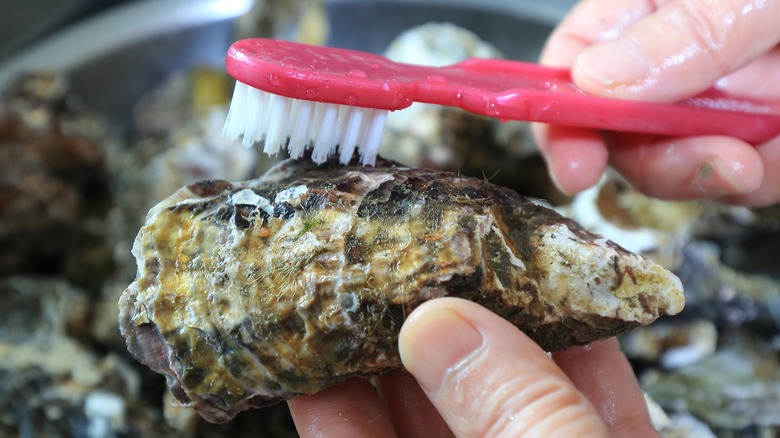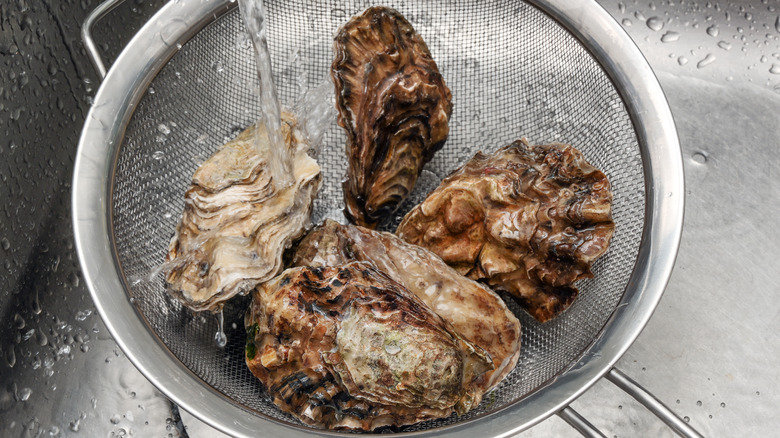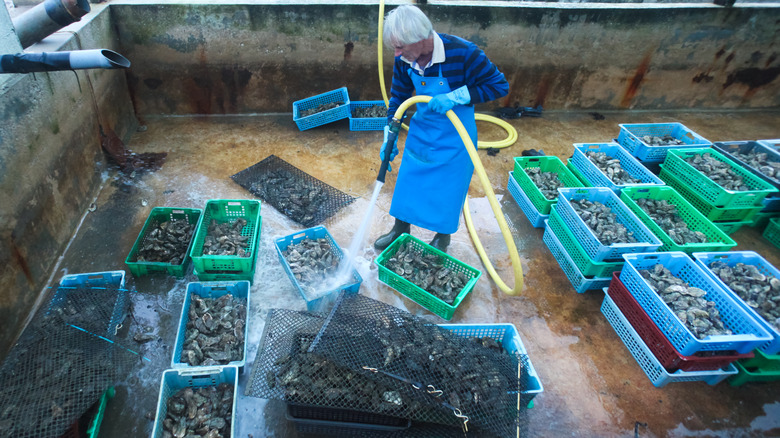What's The Best Way To Clean Oysters Before Shucking?
You'll inevitably be confronted with weird and wonderful creatures when you venture into the great blue beyond of our planet's oceans. Although many of the subaquatic species are utterly alien in appearance, several of them are edible. However, readying seafood for kitchen use isn't always as easy as preparing land-dwelling creatures.
Even the most straightforward seafood staple, sushi, which is little more than raw fish and rice, has an incredibly delicate creation process that involves precise cuts and nimble fingers. When the ocean critters get even more unfamiliar, cooking them becomes more involved.
If you want to eat crawfish, you'll need to forcefully disassemble your crawdad's corpse to find its limited meat, whereas eating sea urchins will require you to get past their intimidating spines. Improperly prepared pufferfish, or fugu, could kill you. When dealing with mollusks like oysters, you'll need to shuck the shell to access the sweet meat inside, but first, you'll need to give your oysters a thorough soak and scrubbing.
How to clean your oysters
If you want to slurp down a few succulent oysters, there are a few steps you need to take before it's time to start shucking. Eating dead oysters is dangerous, so you need to do a visual check to ensure their shells are still tightly pursed. Oysters can be kept in your refrigerator by draping a damp towel over them — resting the oysters on their rounded side will ensure they don't lose any delicious brine.
Often, a lot of the detritus stuck to the side of your oyster can be dislodged with a quick bath in cold water. Oysters naturally take in the water and filter out the silt, leaving a perfect piece of meat behind. You can add a small amount of cornmeal to the water, which helps force out the sand as the oysters self-clean.
After the oysters have soaked, it's still possible that their shells will still be spackled with stubborn debris. Give your oysters a vigorous scrub with a hard-bristled brush to make them on the half-shell sparkle.
Do muddy molluscs even need scrubbing?
Safety is one of the most important reasons for scrubbing your oysters. Years of being sanded down by the ocean's ebbs and flows can give your oyster's shell jagged edges, which might cut you while you're shucking. A stiff scrub could dislodge these potentially perilous points.
Generally speaking, mollusks don't get around much. As such, they tend to accumulate sand, silt, and other detritus on their shells. Fortunately, many of the mollusks you'll find while shopping at the grocery store are farm-raised, limiting the amount of gunk in your fresh seafood. Nevertheless, scrubbing is still a sensible decision — no one wants to bite into a bit of sandy oyster.
Former "Man vs. Food" host Adam Richman cleans clams by allowing the grill to burn away all of the unpleasant ocean refuse, though he also scrubs his clams before they're tossed into the fire. Since oysters are often enjoyed raw, freeing them of any excess grit is essential.


